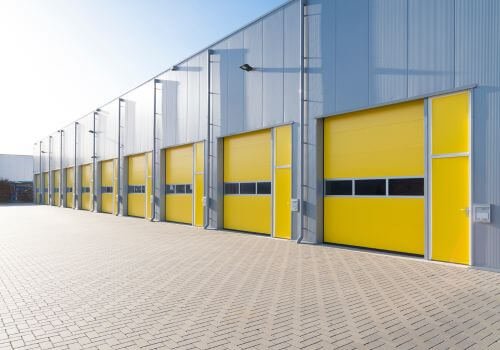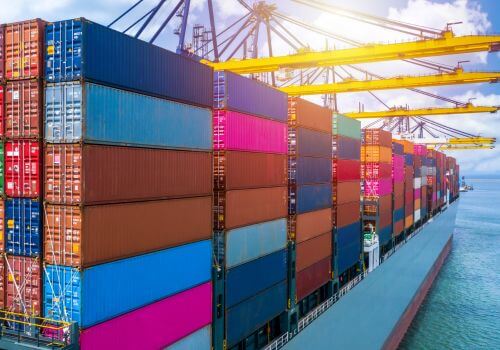Maritime transport plays a critical role in global logistics and trade. It is the backbone of international commerce, enabling the movement of goods across continents efficiently and cost-effectively.
In this guide, we will walk you through the basics, key components, and critical considerations of maritime transport in logistics.
What is maritime transport?
Maritime transport refers to the movement of goods and passengers via sea routes using ships. It is one of the oldest modes of transportation and remains vital today, accounting for over 80% of global trade by volume. Ships carry everything from raw materials like oil and coal to finished goods like electronics and automobiles.
Why is maritime transport important in logistics?
Maritime transport is the backbone of international logistics, and its importance cannot be overstated. Here’s why it plays such a vital role:
- Global connectivity: Ships connect countries and continents, enabling businesses to trade goods across vast distances. Whether it's raw materials from one region or finished products heading to another, maritime transport makes global trade possible.
- Cost efficiency: Moving goods by sea is one of the most affordable ways to transport large volumes. Compared to air freight, shipping is significantly cheaper, making it the preferred choice for businesses looking to minimize costs.
- High cargo capacity: Ships are designed to carry massive amounts of cargo, whether it’s thousands of containers on a container ship or bulk goods like coal and grain on specialized vessels. This makes maritime transport ideal for handling large-scale shipments.
- Environmental benefits: While not perfect, maritime transport is more fuel-efficient than other modes like air or road transport when measured per ton-mile. This makes it a relatively eco-friendly option for moving goods over long distances.
In short, maritime transport is essential because it provides an affordable, efficient, and reliable way to move goods globally, supporting the smooth flow of international logistics and trade.
What are the key components of maritime transport?
To understand how maritime transport works, it’s important to get familiar with its main components. These are the building blocks that make the entire system function smoothly.
Ports
Ports are hubs where ships load and unload cargo. They are equipped with cranes, warehouses, and other infrastructure to handle goods efficiently. Major ports like Shanghai, Rotterdam, and Singapore are critical nodes in global trade.
Ships
There are various types of ships designed for specific cargo:
- Container ships: Carry goods in standardized containers.
- Bulk carriers: Transport unpackaged bulk cargo like grains or coal.
- Tankers: Move liquids such as oil or chemicals.
- Ro-Ro ships: Designed for vehicles (Roll-on/Roll-off).
Shipping lines
Shipping lines are companies that own and operate fleets of ships. Examples include Maersk, MSC, and CMA CGM.
Freight forwarders
These are intermediaries who coordinate the shipment of goods on behalf of exporters or importers. They handle documentation, customs clearance, and booking cargo space.
What does the maritime transport process look like?
Maritime transport follows a step-by-step process to move goods efficiently across the globe.
1. Booking cargo space
The journey begins when an exporter or importer books space on a ship. This can be done directly with a shipping line or through a freight forwarder, who acts as an intermediary to arrange the shipment.
2. Transporting goods to the port
Once the booking is confirmed, the goods are transported to the origin port using trucks, trains, or other modes of transport. At the port, the cargo is prepared for loading onto the ship.
3. Loading cargo onto the ship
At the port, cranes and other equipment are used to load the cargo onto the vessel. If the goods are containerized, they are placed into standardized containers that make handling and stacking easier.
4. Sea voyage
The ship embarks on its journey across the ocean to reach the destination port. Depending on the route and distance, this voyage can take anywhere from a few days to several weeks.
5. Arrival at destination port
Once the ship reaches its destination port, the cargo is unloaded using specialized equipment. This step often involves customs clearance, where authorities inspect and approve goods for entry into the country.
6. Final delivery to end destination
After unloading and clearing customs, the goods are transported from the port to their final destination—whether it’s a warehouse, factory, or retail store—usually by truck or rail.
Common terms used in the maritime transport industry
As you delve into maritime logistics, you’ll encounter several key terms that are essential to understanding the process. Here are a few important ones to get familiar with:
Bill of Lading (BOL)
This is a crucial document issued by the shipping company to confirm that they have received your cargo. It serves as a receipt and a contract between you and the carrier, detailing the type, quantity, and condition of the goods being shipped.
TEU (Twenty-foot Equivalent Unit)
When talking about container shipping, you’ll often hear about TEUs. This term is used to measure the capacity of ships and ports. Essentially, it’s a standard unit of measurement for containers, where one TEU is equivalent to a container that’s 20 feet long.
Demurrage
This is a charge you might incur if your cargo stays at the port longer than the allowed time. It’s like a parking fee for your containers—once the free time expires, you’ll start paying extra for every additional day your cargo remains at the port.
In summary, Maritime Transport in logistics refers to the movement of goods across sea routes using ships, enabling the efficient and cost-effective transportation of large volumes of cargo over long distances, often as part of global supply chains.






